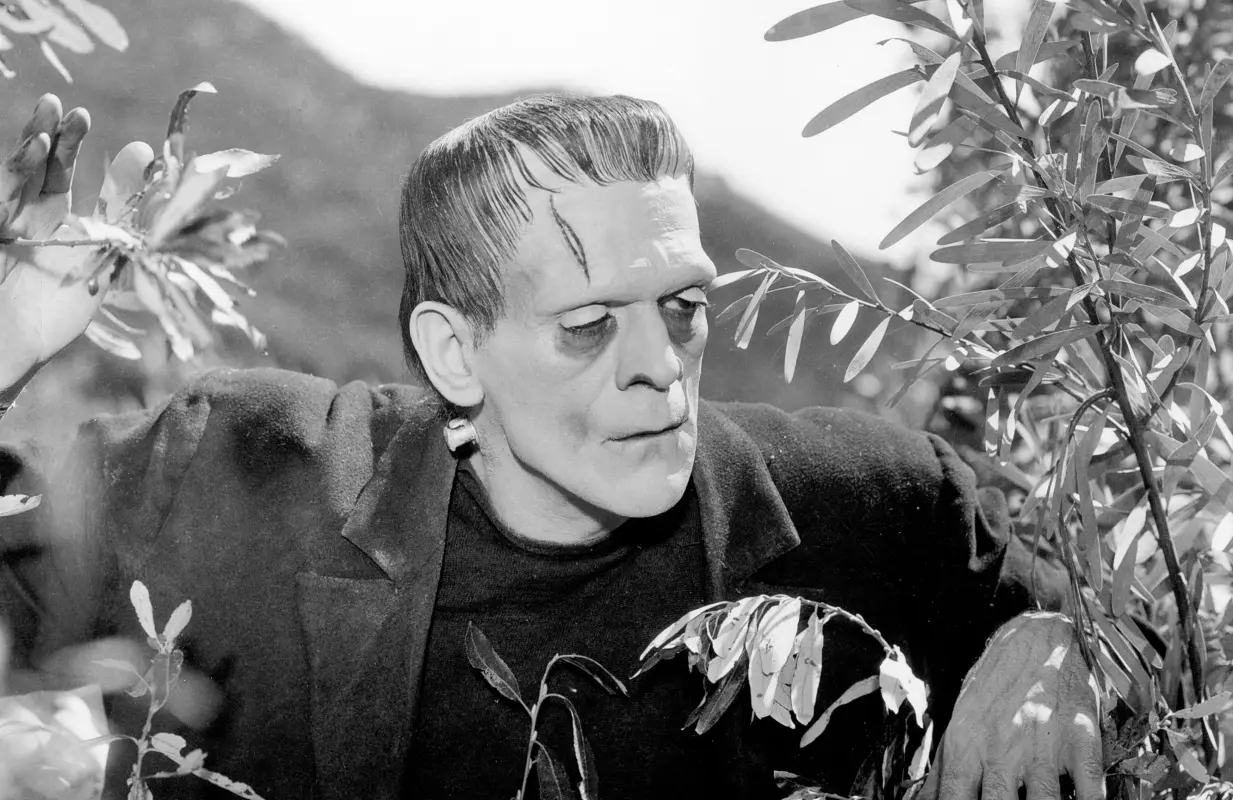The Queer for Fear Docuseries Asks: Is Frankenstein a Gay Horror Movie?
-
 Boris Karloff in Frankenstein.
Boris Karloff in Frankenstein.Primetimer's Reviews Editor Mark Blankenship isn't just a TV fan: He's also a movie buff. From time to time, something on the small screen will inspire him to write about a film, which is why Shudder's Queer for Fear inspired this deep dive into Frankenstein.
Is Frankenstein's monster actually a monster, or is he just misunderstood? You almost have to ask that question in 2022, now that we've spent several postmodern decades reframing our perception of terrifying villains from the past. In Wicked, the Wicked Witch of the West is a feminist icon. In True Blood and Twilight, vampires are romantic heroes. So doesn't it stand to reason that Frankenstein's creature, brought to life by cruel science and then immediately turned on by villagers who don't understand him, is actually a noble outcast, suffering because he's different?
That's a central question in an early segment of Queer for Fear, Bryan Fuller's docuseries for Shudder about horror fiction's deep conection to queer identity. Several of the experts interviewed note that Mary Shelley, who created Frankenstein, was queer herself, and so was James Whale, who directed the classic 1931 film. They argue that it's not hard to see Dr. Frankenstein and his creature as stand-ins for people who feel like outcasts, particularly those with taboo desires.
Even though I hadn't seen Frankenstein before, I nodded as I watched this part of the show. "Yes," I thought. "This feels right." I'd somehow internalized this idea about the creature, so when I streamed the movie on Peacock, I figured I'd happily watch my received wisdom get validated.
Except it wasn't so simple. For one thing, Frankenstein's monster really does do terrible things. He attacks Dr. Frankenstein's fianceè Elizabeth in her bedroom. He kills both Fritz, the doctor's assistant, and Waldman, his old teacher. In one bonkers scene, he tosses a small girl named Maria into a lake, where she drowns.
This is bad! It's not like the creature is just minding his own business at home. He's out there ending people's lives, which is why a mob of villagers comes after him with torches. In fact, they only spring to action after Maria's father carries her dead body through the streets. Even if we disapprove of their justice, it's easy to understand what inspires it.
But that's not to say that the monster is pure evil. The film complicates things by showing the reasons he's so violent. For one, we know that when Dr. Frankenstein builds the monster's body from spare parts, he uses an "abnormal brain." It's even kept in a jar with a label that explicitly says "abnormal brain." Right away, then, we're shown there's something inherently wrong with the brute. (From our modern vantage point, there are many ways to interpret the concept of an "abnormal brain," which deepens the film's resonance as a parable about outsiders.)
Plus, the monster reacts on pure instinct. He is terrifed of fire, so when Fritz taunts him with a torch, he kills Fritz out of fear. He kills Waldman because Waldman is trying to cut him into pieces in order to end his reign of terror.
And little Maria? He throws her into the lake after they toss some flowers in there and watch them float. It's clear he's enjoying himself, and he just wants to watch Maria bob around like a daisy on the water. He gets upset when she sinks —and Boris Karloff's performance communicates legitimate grief —but that's hardly a ringing endorsement of his character. He's dangerous, unthinking, and unsophisticated, which means he cannot be trusted. We might pity him, but the film frames his existence as an abomination.
So if Frankenstein really is about outcasts, then it suggests their inherent flaws have doomed them to suffer and to wound. Some of the interviewees in Queer for Fear allude to this, but there's nothing like watching the original to get the full, desperate sense of what's wriggling beneath the surface of the story.
If you see this movie through a queer lens, then this is hard stuff, since plenty of queer people (myself included) have felt like freaks who deserve whatever mistreatment we get. But no matter how unpleasant it is, it's important that we watch all the same. Queer stories don't always have to be empowering to make an impact, and it's up to us to decide what to do with the ones that show this kind of pain. I don't feel that particular agony anymore, and remembering what it was like makes me even more grateful that I've shed the belief I'm a monster.
Queer for Fear premieres September 30 on Shudder. New episodes Fridays. Frankenstein streams on Peacock.
Mark Blankenship has been writing about arts and culture for twenty years, with bylines in The New York Times, Variety, Vulture, Fortune, and many others. You can hear him on the pop music podcast Mark and Sarah Talk About Songs.
TOPICS: Queer for Fear, Shudder, Frankenstein